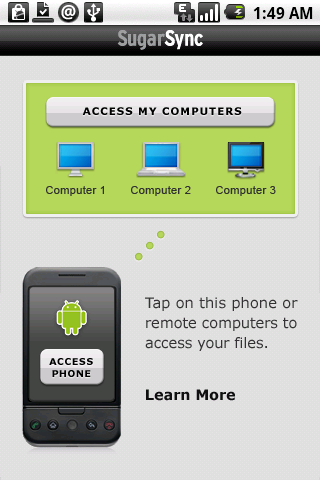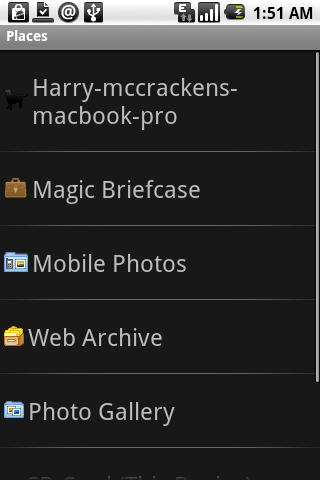 SugarSync, the nifty service that lets you store folders full of files in the cloud and sync them among PCs, Macs, and smartphones, has long given away 2GB of free storage as a way of introducing new users to its paid, larger-capacity tiers of service. That’s nice. This is nicer: It’s increasing free accounts to 5GB of space. SugarSync CEO Laura Yecies told me that the company thinks a more generous free version will actually help it make more money, since the 250% increase will make it easier to explore its potential before plunking down any money
SugarSync, the nifty service that lets you store folders full of files in the cloud and sync them among PCs, Macs, and smartphones, has long given away 2GB of free storage as a way of introducing new users to its paid, larger-capacity tiers of service. That’s nice. This is nicer: It’s increasing free accounts to 5GB of space. SugarSync CEO Laura Yecies told me that the company thinks a more generous free version will actually help it make more money, since the 250% increase will make it easier to explore its potential before plunking down any money
The service’s paid options range from a 30GB account for $4.99 a month (or $49.99 a year) to a 500GB one for $39.99 a month (or $399.99 a year); there are also multiuser business accounts.
SugarSync’s closest counterpart, Dropbox, still offers 2GB for free, but with any luck, SugarSync’s move will set off a free-space war. (Microsoft’s Windows Live Mesh already let you sync up to 5GB of data into a SkyDrive account, but Microsoft doesn’t seem to be giving the service much love these days.) Other services such as Mozy, Carbonite, Norton Backup, and Google Storage make it possible to back up larger amounts of data to the cloud for less money, but they lack the syncing and other features that make SugarSync so versatile.
[Update: A representative of Box.net sent me a note to point out that it started giving 5GB of storage to users of its free version in October.]

 In theory, e-mail attachments are the very worst way to distribute files (or just move them from one of your computers to another). They choke e-mail servers with redundant bytes, are hard to keep track of, and often fail to work at all. In reality, though, there’s something about the human brain that makes us like attachments.
In theory, e-mail attachments are the very worst way to distribute files (or just move them from one of your computers to another). They choke e-mail servers with redundant bytes, are hard to keep track of, and often fail to work at all. In reality, though, there’s something about the human brain that makes us like attachments.

 Saw Star Trek, expected Tribbles…
Saw Star Trek, expected Tribbles…